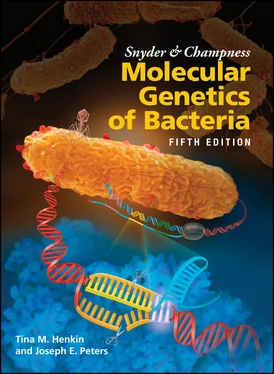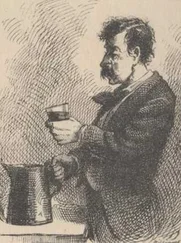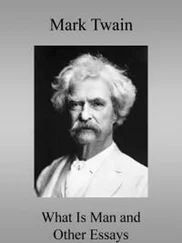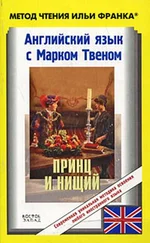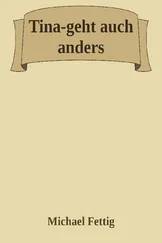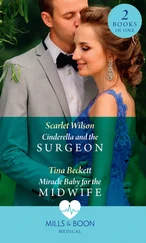(A)Standard clover leaf ... Figure 2.18 Pathways for RNA degradation. RNA transcripts that are gene... Figure 2.19 Two amino acids joined by a peptide bond. The bond connects... Figure 2.20 Primary, secondary, tertiary, and quaternary structures of ... Figure 2.21 The composition of a bacterial ribosome containing one copy... Figure 2.22 Crystal structures of a tRNA and the ribosome.
(A)... Figure 2.23 Overview of translation.
(A)The ribosomal A (amino... Figure 2.24 Aminoacylation of a tRNA by its cognate aminoacyl-tRNA syn... Figure 2.25 Complementary pairing between a tRNA anticodon and an mRNA... Figure 2.26 Conversion of methionine (Met) to
N -formyl-methionin... Figure 2.27 Structure of a typical bacterial translational initiation r... Figure 2.28 Initiation of translation.
(1)The IF3 factor binds ... Figure 2.29 The peptidyltransferase reaction catalyzes dissociation of ... Figure 2.30 Termination of translation at a nonsense codon. In the abse... Figure 2.31 Removal of the N-terminal formyl group by peptide deformyla... Figure 2.32
trans -Translation by transfer-messenger RNA (tmRNA)... Figure 2.33 Wobble pairing between the anticodon on the tRNA and the ... Figure 2.34 Structure of a polycistronic mRNA.
(A)The coding ... Figure 2.35 Model for translational coupling in a polycistronic mRNA... Figure 2.36 Polarity in transcription of a polycistronic mRNA transcr... Figure 2.37 Chaperonins. The GroEL (Hsp60)-type chaperonin multimers ... Figure 2.38 Protein transport systems.
(A)Cutaway view of the... Figure 2.39 Schematic representation of the type I, II, III, and IV ... Figure 2.40 Structure and function of a typical autotransporter. A ... Figure 2.41 Comparison of the
Firmicute-type injectosome ... Figure 2.42 The sortase A pathway.
(A)Typical sortase sub... Figure 2.43
(A)The two general types of transcriptional r... Figure 2.44 Relationship between gene structure in DNA and the co... Figure 2.45 Transcriptional and translational fusions to express ...
4 Chapter 3 Figure 3.1 Detection of auxotrophic mutants. Cells were scraped with a loop fr... Figure 3.2 The number of mutants in a culture is not proportional to the numbe... Figure 3.3 The Luria and Delbrück experiment. In experiment 1, a single flask ... Figure 3.4 Mutants are clonal. In experiment 1, cells were spread onto a plate... Figure 3.5 The number of cell divisions (7) equals the total number of cells I...Figure 3.6 The fraction of mutants increases as a culture multiplies, and the ...Figure 3.7 Transitions versus transversions. The mutations are shown in gold s...Figure 3.8 (A)A mispairing during replication can lead to a base pair change ...Figure 3.9 Removal of deaminated cytosine (uracil) from DNA. (A)Comparison of...Figure 3.10 Missense mutation. A mutation that changes T to C in the DNA templ...Figure 3.11 Nonsense mutation. Changing the CAA codon, encoding glutamine (Gln...Figure 3.12 Frameshift mutation. The wild-type mRNA is translated as glutamine...Figure 3.13 Slippage of DNA at a repeated sequence (for example, a series of A...Figure 3.14 Ectopic recombination between directly repeated sequences can caus...Figure 3.15 Formation of a long tandem-duplication mutation does not Inactivat...Figure 3.16 Recombination between inverted repeats can cause inversion mutatio...Figure 3.17 The pathway to galactose utilization in E. coli and most other org...Figure 3.18 Formation of a nonsense suppressor tRNA. (A)Gene X (turquoise) an...Figure 3.19 Selection of a His +revertant. A sample of a His –mutant cul...Figure 3.20 Replica plating. (A)A few hundred bacteria are spread on a nonsel...Figure 3.21 A simplified diagram of recombination between two genetic markers....Figure 3.22 Different consequences of recombination between linear and circula...Figure 3.23 Using recombination to introduce an antibiotic resistance cassette...Figure 3.24 Using marker rescue to locate a mutation In the physical map of th...Figure 3.25 Complementation tests for allellsm. Four mutations, hisA1 , hisA2 , ...Figure 3.26 E. coli lacZ α intragenic complementation. (A)The lacZ ∆M15 deleti...Figure 3.27 Identification of clones of the thyA gene of E. coli by complement...Figure 3.28 Use of marker rescue to identify a clone containing at least part ...Figure 3.29 Selected versus unselected markers In a bacterial cross. Replaceme...Figure 3.30 Example of generalized transduction. A phage Infects a Trp +bacter...Figure 3.31 Cotransduction of bacterial genetic markers. (A)Two-factor cross....Figure 3.32 Generic test for reversion versus suppression. (A)The mutation ha...Figure 3.33 Using transduction to distinguish reversion from suppression. If t...Figure 3.34 Transfer of chromosomal DNA by an Integrated plasmid. Formation of...Figure 3.35 Partial genetic linkage map of E. coli showing the positions (blac...Figure 3.36 Mapping by Hfr crosses. The phenotypes and positions of the marker...Figure 3.37 Mapping by gradient of transfer during an Hfr cross. The ordinate ...
5 Chapter 4Figure 4.1 Supercoiling of a covalently closed circular plasmid. (A)A break i...Figure 4.2 Some common schemes of plasmid replication. (A)Unidirectional repl...Figure 4.3 Coexistence of two plasmids from different Inc groups. (A)After di...Figure 4.4 Genetic map of plasmid ColE1. The plasmid is 6,646 bp long. On the ...Figure 4.5 Regulation of the replication of ColE1-derived plasmids. RNA II mus...Figure 4.6 Pairing between an RNA and its antisense RNA. (A)An antisense RNA ...Figure 4.7 Regulation of replication of the IncFII plasmid R1. (A)Locations o...Figure 4.8 Regulation of plasmid ColIb-P9 copy number by antisense RNA inhibit...Figure 4.9 Regulation of plasmid pT181 copy number by antisense RNA regulation...Figure 4.10 The ori region of pSC101. R1, R2, and R3 are the three iteron sequ...Figure 4.11 The “handcuffing” or “coupling” model for regulation of iteron pla...Figure 4.12 The Xer functions of E. coli catalyze site-specific recombination ...Figure 4.13 Model for partitioning of the R1 plasmid. (A)Structure of the par Figure 4.14 Model for partitioning by par systems on P1, F, and RK2. (A)Struc...Figure 4.15 Finding the origin of replication ( ori ) in a plasmid. Random piece...Figure 4.16 pUC expression vector. A gene cloned into one of the restriction s...Figure 4.17 pBAC cloning vector for cloning large pieces of DNA. The multiple ...Figure 4.18 Shuttle plasmid YEp13. The plasmid contains origins of replication...
6 Chapter 5Figure 5.1 A simplified view of conjugation by a self-transmissible plasmid, t...Figure 5.2 Partial genetic map of the ~100-kilobase pair (kbp) self-transmissi...Figure 5.3 Representation of the F transfer apparatus. The pilus is assembled ...Figure 5.4 Mechanism of DNA transfer during conjugation, showing the Mpf funct...Figure 5.5 Reactions performed by the relaxase. (A)The relaxase nicks the DNA...Figure 5.6 Fertility Inhibition of the F plasmid. Only the relevant tra genes ...Figure 5.7 Gene arrangements of type IV secretion loci. Genes with homologs in...Figure 5.8 Mechanism of plasmid mobilization. The donor cell carries two plasm...Figure 5.9 Integration of the F plasmid by recombination between IS 2 elements ...Figure 5.10 Generation of a prime factor by recombination. Recombination may o...Figure 5.11 Self-transmissible and mobilizable elements are found with integra...Figure 5.12 Fluorescence micrograph of Bacillus subtilis cells showing the loc...Figure 5.13 Self-transmissible Integrating conjugative elements (ICE) can carr...Figure 5.14 Genetic map and diagram of the integration and excision process of...
Читать дальше
